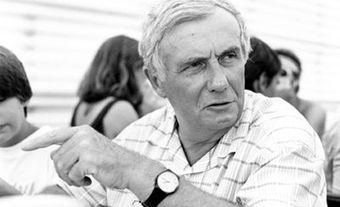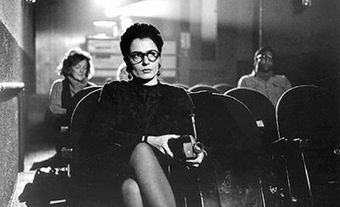Colin Archibald Low, CM, film director, producer (born 24 July 1926 in Cardston, AB; died 24 February 2016 in Montréal, QC ).

With a background in fine arts, Low joined the National Film Board's animation department in 1945. When the NFB adopted the Unit system in 1951, animation became part of Unit B, whose executive producer Tom Daly had a major influence on Low's career. In 1952, Low directed The Romance of Transportation in Canada, a witty animated film that viewed Canadian history through the impact of technological developments. The film won several awards and remained a popular teaching tool for many years.
Low soon turned his attention from film animation to documentary. His first short documentary (see Documentary Film) was Corral (1954), filmed in Alberta on the ranch where Low spent his childhood. It had a major impact because of the decision, made during the editing process, to eliminate the usual commentary and use only a solo guitar piece to accompany the lyrical images of a cowboy rounding up horses. Low went on to direct many important documentaries in the 1950s and 1960s, including City of Gold (co-directed with Wolf Koenig in 1957), in which the story of the gold rush to Dawson City is told mainly by means of still photographs.
Low's experience in animation was an asset in the making of Universe (1960), which he co-directed with Roman Kroitor. A short but spectacular educational film that explores the structure of the universe, it won many awards and received an Oscar nomination. Low and Kroitor also created Labyrinth (1967), an installation constructed at Expo 67 that used the Greek myth to evoke the stages in the human life cycle. The experience culminated in the viewing of an elaborate five-screen film expressing a vision of the essence of human experience underlying the variety of different cultures.
Low was heavily involved in the development of the NFB's Challenge for Change program (1967–80), which attempted to encourage social change by putting film and video equipment into the hands of the people concerned. He initiated the program with a series of films made with the people of the Fogo Islands, off the north coast of Newfoundland, in 1967 and 1968. The success of these films led to an invitation to help set up a similar program in the United States.
In 1972, Low became an executive producer at the NFB and was appointed director of regional production in 1976. He returned to some of his earlier concerns when he directed (with Tony Ianzelo) Transitions for Expo 86 in Vancouver. This film dealt with the role of transportation in shaping Canada's cultural identity and used the large-screen IMAX system that developed from the Labyrinth project. His abiding interest in the relations of technology and perception lies behind Moving Pictures (2000), which explores the historical links between moving images and the development of modern warfare.
Low was made a Member of the Order of Canada in 1996 and in December 1997 he became the first anglophone ever to be honoured with the Québec government's prestigious Prix Albert-Tessier, one of the Prix du Québec.

 Share on Facebook
Share on Facebook Share on X
Share on X Share by Email
Share by Email Share on Google Classroom
Share on Google Classroom


